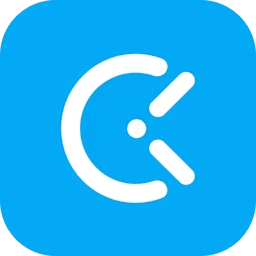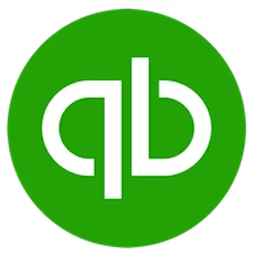Businesses often have diverse teams working across shifts or time zones. Coordinating these factors to create employee schedules that meet operational needs while also accommodating staff preferences can be time-consuming. Employee scheduling software simplifies and streamlines this process to ensure adequate resource coverage for various business functions.
From basic workforce management and staff scheduling to automated shift swapping and real-time communication, employee scheduling software offers a comprehensive suite of tools to meet the diverse needs of dynamic workplaces. However, understanding its key features is crucial for businesses to choose software that aligns with their unique operational needs.
This article highlights five key employee scheduling software features based on the ratings given by verified software users. We’ve also included the highest-rated employee scheduling software products for each feature.

1. Timesheet management
The timesheet management feature of employee scheduling software allows businesses to track work hours for employees. It typically comprises a built-in online timer that staff members can use to clock in and out of shifts. The time clock can also be used to track employee attendance, including late arrivals, absences, and overtime. Managers can use the timesheet data to monitor their team’s punctuality and adherence to the work schedule. They can also set thresholds to prevent overtime situations and avoid exceeding the legal work hours or overtime budget. Additionally, timesheet functionality often integrates with payroll systems to automate wage calculations based on the tracked hours. This integration helps reduce manual errors in calculating regular wages and overtime pay.

What business problem does timesheet management solve?
Manual timesheets often rely on employees to remember to start and stop the timer or fill out paper forms, increasing the chances of forgotten entries, inaccurate estimates or time tracking, and data entry mistakes. The timesheet management feature solves this issue by automating the employee time tracking process. Unlike manual entries, timesheets track employee work hours in real time, reducing reliance on manual inputs and minimizing errors caused by estimations or approximations.
Ideal users of the timesheet management feature
Team leads or managers can use the feature to gain insights into team productivity, facilitating better resource allocations as well as data-driven decisions about employee staffing levels. Real-time data on employee hours and project timelines also allows managers to identify trends (e.g., overtime patterns), monitor project progress, and optimize workflows to maximize efficiency and performance.
Top 3 products with the highest ratings for timesheet management
We selected products for this article based on their average ratings between March 2022 - March 2024, which may differ from their current overall average ratings.
Trial/Free Version
- Free Trial
- Free Version
Timesheet management feature rating
Device compatibility
Trial/Free Version
- Free Trial
- Free Version
Timesheet management feature rating
Device compatibility
Trial/Free Version
- Free Trial
- Free Version
Timesheet management feature rating
Device compatibility
2. Employee management
The employee management feature helps oversee and manage the business workforce. It includes tools for onboarding new employees, maintaining personnel records, and facilitating communication between managers and team members. It also includes tools for tracking employee performance and attendance, providing insights into productivity, punctuality, and work schedule adherence. In some shift scheduling software solutions, employee management functionality offers tools for budgeting labor expenses, forecasting staffing needs based on historical data, and analyzing labor cost trends over time.

What business problem does employee management solve?
Companies often face challenges in effectively utilizing their workforce, leading to overstaffing or understaffing issues. The employee management feature helps optimize staffing levels by leveraging dynamic shift scheduling capabilities that consider factors such as staff availability, skill sets, and preferences. This ensures staffing levels are aligned with operational needs, minimizing inefficiencies and maximizing productivity. Additionally, the employee management feature helps track staff performance metrics, including productivity levels and punctuality, allowing team managers to provide timely feedback, address performance issues, and recognize top performers.
Ideal users of the employee management feature
Shift supervisors or team leads can use the employee management feature to assign tasks, monitor employee attendance and performance, address scheduling conflict or resource shortages, and communicate important updates or instructions to their team members in real time.
Top 3 products with the highest ratings for employee management
We selected products for this article based on their average ratings between March 2022 - March 2024, which may differ from their current overall average ratings.
Trial/Free Version
- Free Trial
- Free Version
Employee management feature rating
Device compatibility
Trial/Free Version
- Free Trial
- Free Version
Employee management feature rating
Device compatibility
Trial/Free Version
- Free Trial
- Free Version
Employee management feature rating
Device compatibility
3. Schedule distribution
The schedule distribution feature of an employee scheduling tool allows managers and administrators to share work schedules with team members. It simplifies communicating staff schedules by providing various distribution options, such as email and SMS, or through the software’s integrated communication platform.

What business problem does schedule distribution solve?
Without a centralized system for distributing schedules, managers would need to individually inform each employee about their shift, leading to time-consuming and possibly even error-prone communication. The employee schedule distribution feature addresses this challenge by providing an automated workflow for assigning schedules to staff members, saving time and reducing the likelihood of errors or miscommunication. Additionally, the feature often provides multiple notification options, such as email or text messages, to promptly inform employees about assigned shifts or any schedule changes or updates.
Ideal users of the schedule distribution feature
Managers and supervisors responsible for creating and managing work schedules can use this feature of employee scheduling software to assign shifts to their team members.
Top 3 products with the highest ratings for schedule distribution
We selected products for this article based on their average ratings between March 2022 - March 2024, which may differ from their current overall average ratings.
Trial/Free Version
- Free Trial
- Free Version
Schedule distribution feature rating
Device compatibility
Trial/Free Version
- Free Trial
- Free Version
Schedule distribution feature rating
Device compatibility
Trial/Free Version
- Free Trial
- Free Version
Schedule distribution feature rating
Device compatibility
4. Calendar management
The calendar management feature of employee scheduling software enables businesses to plan, organize, and track staff schedules using a visual calendar interface. It offers a centralized team calendar where team managers can create, edit, or assign shifts based on employee availability and shift preferences. All changes made to the shifts, such as employee shift swap, time-off requests, or shift cancellations, are reflected in the calendar in real time. Both employees and managers receive notifications about these schedule changes, minimizing confusion and ensuring everyone has access to the latest information.

What business problem does calendar management solve?
Workforce scheduling conflicts, such as double bookings or shifts assigned during unavailable hours, can lead to operational disruptions and employee dissatisfaction. Calendar management functionality offers a strategic approach to tackle this issue by giving managers real-time visibility into their team members’ availability throughout a day or week. By leveraging this feature, managers can allocate shifts to suitable candidates, minimizing the risk of workforce scheduling conflicts and ensuring smooth operations.
Ideal users of the calendar management feature
Team or shift managers can use the calendar management feature to gain visibility into the entire team schedule or an individual worker’s shift. Additionally, employees benefit from this feature by getting visibility into their assigned shifts. Employees can also add time-off or leave durations to the calendar and update their work hours.
Top 3 products with the highest ratings for calendar management
We selected products for this article based on their average ratings between March 2022 - March 2024, which may differ from their current overall average ratings.
Trial/Free Version
- Free Trial
- Free Version
Calendar management feature rating
Device compatibility
Trial/Free Version
- Free Trial
- Free Version
Calendar management feature rating
Device compatibility
Trial/Free Version
- Free Trial
- Free Version
Calendar management feature rating
Device compatibility
5. Task scheduling
The task scheduling feature lets managers create and define tasks or job assignments, specifying details such as task description, duration, location, and required resources. Once the tasks are created, managers can assign them to individual employees or groups of employees based on their availability, skill sets, certifications, or other relevant criteria. Managers can also track the progress of tasks in real time, monitoring the completion status and identifying any issues or delays. This tracking capability helps manage workload distribution and ensure timely task completion.

What business problem does task scheduling solve?
Without clear task assignments and priorities, employees would struggle to manage their workload, leading to missed deadlines and project delays. This can impact employee productivity as well as customer satisfaction. The task scheduling feature enables managers to define task deadlines and priorities, ensuring employees understand which tasks are most critical and need immediate attention. This feature helps teams stay on track and meet project milestones by centralizing task management and providing visibility into deadlines.
Ideal users of the task scheduling feature
Team managers and supervisors are the primary users of the task scheduling feature of employee scheduling software. They can use it to assign tasks to team members, set deadlines, and monitor task progress. The feature also enables managers to assign tasks based on factors such as employee availability, skill sets, and certifications. This capability helps ensure projects are assigned to suitable candidates and completed on time.
Top 3 products with the highest ratings for task scheduling
We selected products for this article based on their average ratings between March 2022 - March 2024, which may differ from their current overall average ratings.
Trial/Free Version
- Free Trial
- Free Version
Task scheduling feature rating
Device compatibility
Trial/Free Version
- Free Trial
- Free Version
Task scheduling feature rating
Device compatibility
Trial/Free Version
- Free Trial
- Free Version












